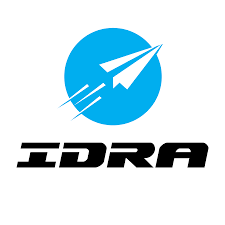FPV drone racing (where FPV stands for first-person view or first person video) is a sport type where participants control “drones” (typically small radio-controlled aircraft or quadcopters), equipped with cameras while wearing head-mounted displays showing the live stream camera feed from the drones. Similar to full-size air racing the goal is to complete a set course as quickly as possible. Drone racing began in Australia in late 2013 and early 2014 with a number of amateur pilots getting together for semi-organized races in Brisbane and Melbourne.
Drone Racing
History
The Drone Racing League (DRL) is a professional drone racing league that operates internationally. DRL pilots race first-person view (FPV) with identical, custom-built drones at speeds above 80 MPH through three-dimensional courses. News publication Quartz described DRL as feeling “like pod-racing from Stars Wars” with “hopes [of becoming] the Formula 1, NASCAR and MotoGP of drone racing.”
Founded in 2015 and launched publicly in January 2016, DRL is broadcast on ESPN, Sky Sports, ProSiebenSat.1, FOX Sports Asia, Group AB, OSN, and Disney XD.
The league is in its third season, the 2018 DRL Allianz World Championship Season, which features seven races in locations including Allianz Riviera in Nice, France, BMW Welt in Munich, Germany, and The Adventuredome in Las Vegas, Nevada.
DRL recently launched the Artificial Intelligence Robotic Racing (AIRR) Circuit, an autonomous drone racing series. It will invite teams of university students and technologists to design an AI framework capable of flying a drone through DRL courses without human intervention and compete for a chance to win $2mm in prizes.

Rules
- If there is a requirement that all model aviation pilots in a host country have a current license or organizational membership to the local body governing model aeronautics then all pilots must meet that requirement in order to compete, and all pilots must adhere to the rules and regulations of safe airframe operation and flight as defined by that body.
- All pilots must adhere to any applicable regulations by the relevant local authorities responsible for manned aircraft regulations.
- Unlawful flight, such as flights near an event at locations where flying is prohibited, will likely result in disqualification from the event.
- All pilots must attend a general safety briefing and sign the appropriate waivers from the race organizer and venue.
- All pilots must demonstrate effective Fail-Safe procedures defined by the Race Director. In most cases this is a “Power Down, no pulse” method, where the aircraft will immediately cease flight by stopping all motors and operation if it loses contact with the radio transmitter.
- All pilots must have an “ARMING” position switch or sequence on their radio. The aircraft should not power up by any accidental controls from the radio. Aircraft arming may be executed by a specific switch on the radio, or by a sequence (e.g. yaw right) to actively arm the radio.
- All pilots must demonstrate an airworthy airframe and pass a general mechanics and electronics test.
- All batteries must be transported and stored in LiPo-safe bags or an approved fire-resistant container.
- Pilots must use FPV to pilot aircraft. This can be with goggles or a ground station, LCD type display.
- In events where emitter-based timing systems are used, pilots are required to have an authorized Timing System Transponder emitter properly installed on their airframe for all official lap timing purposes.
- Pilots must not power up video transmitters unless they have been instructed to do so, e.g. they are about to take part in a race. Powering up a video transmitter at all other times may result in disqualification from the event.
Association
International Drone Racing Association (IDRA) is the “World Standard in Drone Racing!” Home of the 2018 Drone Racing Series & 2018 Challengers Cup.



